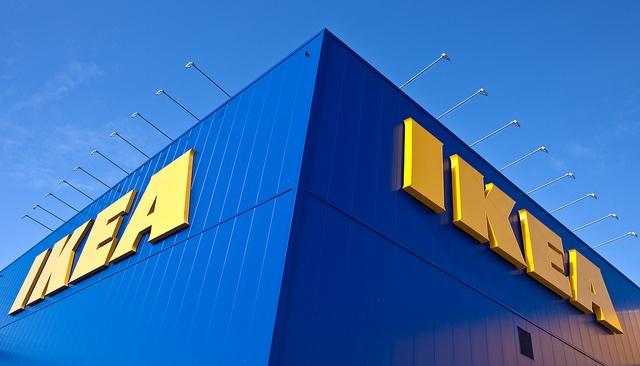
Ikea is a trailblazer when it comes to investing in solar and wind power projects -- and spent big on renewables even before they became cost-competitive with fossil fuels.
Already claiming to be the largest retail wind power investor in Canada, Ikea boosted its clean-energy credentials by purchasing its second wind farm in the province of Alberta.
Last week, the global furniture and housewares giant bought up an 88-megawatt wind power installation 80 miles east of Calgary. The Wintering Hills Wind Farm, which has been in operation since 2012, has 55 turbines spread across 24 square miles of Alberta prairies. Ikea claims the power Wintering Hills generates is enough to electrify 54 of its stores, or almost 26,000 Canadian households.
Ikea did not disclose details about this financial transaction. But according to the CBC, the wind farm’s current owners, TransAlta and Teck Resources, will receive $91 million (or CAD $119.6 million) from Ikea.
The purchase of Wintering Hills is yet another step in Ikea’s move to become entirely energy independent by 2020.
The company says it spent at least $3.2 billion in its quest to become entirely energy- and resource-efficient, with two-thirds of that sum spent on clean-energy projects worldwide.
The privately-owned company is cagey when it comes to releasing precise statistics and financial information. But its latest investment in Canada should help the company achieve its publicly-stated goal of producing more energy than it consumes by 2020.
In addition, Ikea is spending another $1.1 billion (1 billion euros) on a more sustainable supply chain, which includes investments in forestry, the development of alternative materials, recycling and more clean-energy development.
Meanwhile, actions taken within stores indicate the company is walking the walk. For example, the retailer phased out CFL bulbs last fall and now sells only LED lighting. As for its popular food stores that tempt customers after they check out, Ikea has also promised to purchase more responsibly-sourced palm oil. And when it comes to its popular and cheaply-priced textiles, the company invests in startups that aim to reduce their environmental impact.
But despite what it describes as a holistic approach to sustainability, it is on the renewables front where Ikea shines. According to the company’s most recent sustainability report, its focus on renewables far outpaces the competition.
Ikea says it owns 327 wind turbines outright and has installed over 730,000 solar panels on its buildings worldwide. When adding the heat that it sources from renewables, along with some biomass-fueled electricity, the company generated over 3.2 gigawatts of power during fiscal 2016, or about 71 percent of its total energy consumption.
Just two years earlier, the company “only” generated 42 percent of its power from renewables, indicating that its goal of becoming a net energy exporter after this decade is a realistic plan.
Meanwhile, the company will invest in energy storage pilot projects in Sweden and Australia in the coming year, as cost-effective onsite storage would make it more seamless for Ikea to attain that magic 2020 metric. And the retailer claims the reuse of lithium-ion batteries from its fleet of forklift trucks and other vehicles could help the company rely on renewables even more as most of its facilities operate 24/7.
For years, Ikea was mocked as the chain of cavernous stores pitching furniture with names long on vowels but short on quality. The company’s progress on renewables, however, has nudged other companies to follow suit.
And in the meantime, Ikea's investment in clean technologies not only allows the company to do its part to mitigate climate change, but also gives customers the option to purchase products that are more sustainable and energy efficient.
Image credit: Håkan Dahlström/Flickr

Leon Kaye has written for 3p since 2010 and become executive editor in 2018. His previous work includes writing for the Guardian as well as other online and print publications. In addition, he's worked in sales executive roles within technology and financial research companies, as well as for a public relations firm, for which he consulted with one of the globe’s leading sustainability initiatives. Currently living in Central California, he’s traveled to 70-plus countries and has lived and worked in South Korea, the United Arab Emirates and Uruguay.
Leon’s an alum of Fresno State, the University of Maryland, Baltimore County and the University of Southern California's Marshall Business School. He enjoys traveling abroad as well as exploring California’s Central Coast and the Sierra Nevadas.














